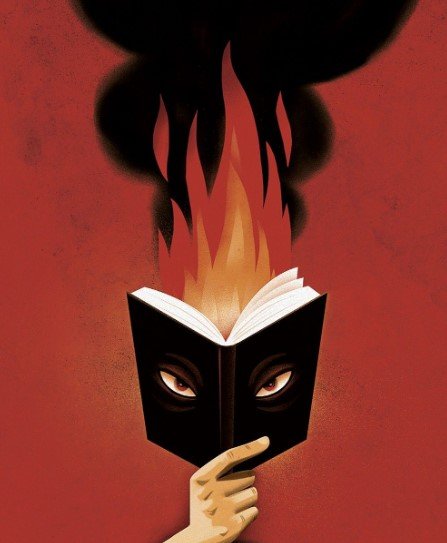Modern-Day Slavery
The Truth About Dystopian Economics & the Slave Trade
You Might Also Like…
“Knowledge makes man unfit to be a slave.”
Slavery still exists. It’s a fact that the public is blissfully unaware of, or it is an issue and topic that isn’t highlighted and is swept under the rug by big tech, media corporations, and the high market value of the equity riddled agendas that both are steeped. In either instance, the truth about modern-day slavery here in the 21st century and human trafficking will be highlighted—it will be put in contrast with the great sin of the African and Trans-Atlantic Slave Trade we are constantly reminded of from Liberal politicians and the media entities that pull water for them.
By no means am I excusing the atrocities of America’s participation in slavery, but (and this is a huge but), there is some perspective to be had in order to not only comprehend the reality of modern-day slaver, but how this 21st century problem is creating an economic dystopia right before our very eyes that the slavery of the past pales when put in comparison to.
The Trans-Atlantic Slave Trade and the United States’ Involvement
In the name of full transparency, records back in the 16th century and all the way to the 19th century had their discrepancies due to the archaic record keeping methods of the time, especially when it came to determining the nationality of ships. Slave Voyages is a comprehensive database of Trans-Atlantic and Intra-America Slave Trades and the database of choice when referencing the slave trade numbers. In response to the discrepancies in the recordkeeping methodologies at the time, they themselves state that they probably “account for less than 1 percent of the ships included in the data set.”
So, with all this in mind, from 1501 to 1866 an estimated 12.5 million slaves were transported within the Trans-Atlantic Slave Trade, and of the countries that participated, Portuguese and Brazilian traders transported roughly 5.8 million of those slaves and were responsible for transporting the highest volume of slaves. During this time, Portugal was the monopolizing country within this portion of the market in the 16th century all thanks to their network of factories along the African coast.
Within this same time frame, the United States was responsible for just over 300,000. In other words, the U.S. was responsible for trading less than 3% of total Africans enslaved compared to the Portuguese market’s whopping 46%.
To say that the United States is morally depraved and was a major contributor to slavery is not only hyperbolic, it is an absolute farce that blatantly disregards the lives lost of those who led the charge in abolishing the global, economic standard of slavery. Again, our tarnished history with slavery which bled into racism has been an abomination to humanity and a gross sin for the soul, as devaluing any human life should be. But, when putting things into proper perspective, slavery always has been a worldwide problem.
And it still is.
Slavery in the 21st Century – Stats and Facts
“It’s funny, because we all read history and we think, ‘Oh, I would … have risen up, I would have fought, I would have been an abolitionist,’ And I tell them, ‘No, you wouldn’t have. If you would have, you’d be doing that right now. You know trafficking exists, you’ve heard of it, but you don’t want to look.”
There are a variety of myths surrounding modern-day slavery, and we could spiral down the rabbit hole, speculating as to the reasons for the Epstein-esque theories, but if we’re being honest, that is a black-pill that will do little to accomplish any perceived goal. In short, 21st century slavery is a problem, and like any addict, the first step is identifying the problem and accepting it.
So, let’s begin...
What is Human Trafficking?
Human trafficking is the exploitation of children and adults for profit—it is the term for slavery in the 21st century which is an umbrella phrase that covers four broad categories: forced labor exploitation (private and state-imposed), forced marriage, and forced sexual exploitation.
How Many People Are Victims of Modern-Day Slavery?
In 2016, there was an estimated 40.3 million people in slavery worldwide, over three times more than were trafficked in the Trans-Atlantic Slave Trade between 1501-1866. The fact of the matter is that there is a market demand for human trafficking that has created a $150 billion industry, and with that much money involved, there is bound to be corruption, collusion, and corporate companies involved with this criminal enterprise.
What is the Country with the Most Slavery?
With an estimated 8 million people in modern-day slavery, India is the country with the most slaves according to a 2018 study. China comes in at second with 3.8 million and Pakistan is the third leader of modern slaves at 3.2 million. Now, with all this being said, according to data by the Walk Free Foundation, approximately 10.5 percent of North Korea's population are categorized as modern-day slaves (2.64 million). While this accounts for roughly seven percent of the total number of slaves globally, per capita, North Korea ranks the highest in the world for slavery in the 21st century.
How Many Slaves Are in America Today?
It is a myth to assume that human trafficking occurs in developing or even communistic nations. Although America has done much in the fight against former and modern-day slavery and does a far better job at handling human trafficking cases compared to their geopolitical counterparts, the Global Slavery Index estimates that there are still over 400,000 people in the United States that are living as victims of 21st century slavery.
It is also believed that one in five human trafficking victims are children, making child sex trafficking a modern-day epidemic. In 2020 alone there were 17,000 NCMEC reports of possible child sex trafficking incidents within the United States, and it is often those closest who do the most harm. Girls are often forced into sex trafficking by boyfriends or male friends, and children in the foster care system are some of the most vulnerable to being trafficked.
Is Slavery Increasing or Decreasing?
Without question, slavery has increased from the 1500s to modern-day society. There were nearly 13 million estimated slaves captured, sold and utilized from the 15th to the 19th centuries while today there are over 40 million, creating a threefold increase.
It is a sobering realization to see how modern-day economics still allow for such an abomination.
Fighting the Economic Dystopia
This global issue comes from a basic problem of supply and demand. Solving the obstacle cannot solely be done by eliminating the supply chain but rather needs to be a twofold, pincer attack that deals with the human trafficking portion of the market and the demand for forced labor and sexual exploitation.
There is a perverse, insatiable desire to exploit and groom the young and malleable in order shape the culture for nefarious purposes, feeding off the sexuality of the mentally ill. From John Money to Helmut Kentler, the depravities of a pleasure-based society has distracted us from serious issues while simultaneously creating others. It is this societal addiction of indulging in the narcissistic me/my culture that has brought us to this economic dystopia where slavery is not only allowed to exist but thrive and increase in market demand.
Until we can curb our malice, corrupt desires, and begin to truly use the autonomy of our agency on a both macro and micro level, the horrors of the Trans-Atlantic Slave Trade will continue to dwarf in comparison to the looming future 21st century slavery holds, which is both Huxleyan and Orwellian in nature.













